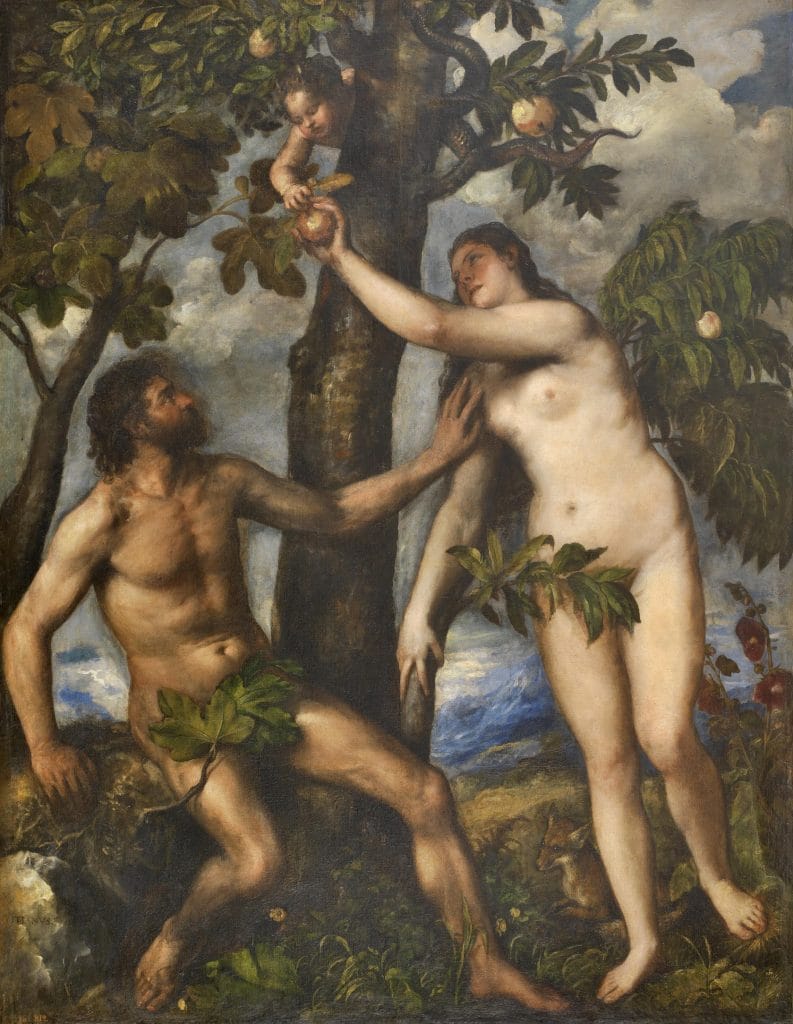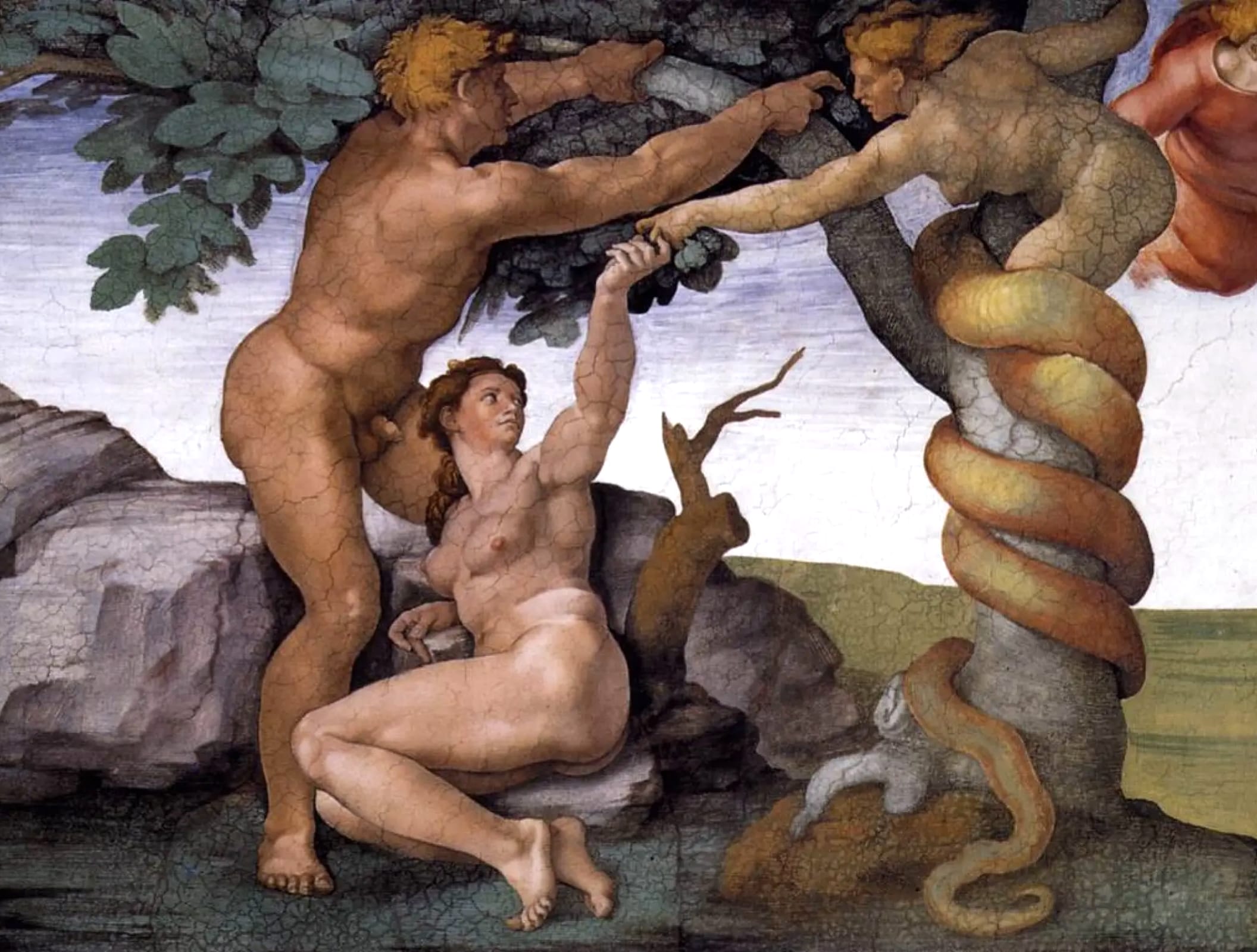Many believe that the fruit that Adam and Eve ate in the biblical story was an apple. We checked to see if the Bible actually says what kind of fruit the forbidden fruit was.
The apple is traditionally considered the forbidden fruit of paradise. So claim many onlineresources, writing on the topic of the Bible. Some children's adaptations of this book too mention this particular fruit. Russian public figure and philosopher Alexander Dugin writes in his article: “But he (Adam. - Ed.) saw that the apple had already been bitten - and not by someone, but by Eve.” Numerous works Renaissance art depict Adam and Eve plucking the forbidden fruit from the apple tree.
The scene of the Fall is widespread in European art. For example, in the joint work of Peter Paul Rubens and Jan Brueghel the Elder “Garden of Eden with the Fall of Man"Adam and Eve are depicted standing at the tree of the knowledge of good and evil. The tree trunk is wrapped around a snake, which gives Eve an apple. In the biblical Book of Genesis, the scene of the Fall described like this: “And the woman saw that the tree was good for food and that it was pleasant to the eyes and desirable because it gave knowledge; and she took of its fruit and ate; And she gave it also to her husband, and he ate.” The Hebrew word used in this verse is פרי (“at”)—biblical and modern Hebrew means "fruit". But nowhere in the Bible does it say what kind of tree it was or what kind of fruit grew on it.
How writes Live Science publication, rabbis in Talmud (a collection of rabbinic discussions on law, philosophy and interpretation of the Torah) and others works Several versions have been put forward about what kind of fruit the forbidden fruit could be. For many years, their leading version was figs. According to the biblical story, after eating the forbidden fruit, Adam and Eve were ashamed of their nakedness and used fig leaves to cover themselves. In the Book of Genesis written: “And the eyes of them both were opened, and they knew that they were naked, and they sewed together fig leaves and made aprons for themselves.” In works of art from the Middle Ages and the Renaissance, naked bodies are most often covered with fig leaves. For example, on fresco Michelangelo Buonarroti's “The Fall and Expulsion from Paradise” in the Sistine Chapel, judging by the shape of the leaves, it is a fig tree that is depicted, although it is not clear what kind of fruit the snake gives to Eve. But on picture Titian's heroes hide behind fig leaves, but Eve still picks an apple from the tree.

The rabbis also suggested that the forbidden fruit could be citron is a bittersweet fruit from the citrus family. There were also versions that it could be grapes, pomegranate, nuts or carob (carob). Italian journalists Roberto Beretta and Elisabetta Broli claim in his book “The Eleven Commandments” that where the Garden of Eden was supposedly located, apple trees could not grow. Journalists believe that the spread of the false version was caused by a too free translation of the Bible text from Hebrew into Latin.
In the 4th century, Bishop of Rome Damasius I, who was the first of the Roman bishops to call himself pope, ordered the leading biblical scholar of the time, Jerome of Stridon, to translate the Hebrew Bible into Latin. The result of 15 years of work was Vulgate. In it, Jerome used the Latin word to designate the fruit (Hebrew “with”) mālum ("apple"). He probably chose this word because it is similar to the word malum - “evil”, “punishment”, “illness”, “misconduct”.
When translating the Bible into English, the word apple also fit well in meaning. During medieval England apple meant any fruit or nut and only after the 17th century began to mean an apple.
Unlike translators, who allow allegory in the text, painters needed to identify the tree of knowledge to visualize the fruit and give the tree recognizable outlines. Paintings on the theme of the Garden of Eden helped cement the apple as a forbidden fruit. During the Renaissance, the apple was the most common fruit in Europe, which is perhaps why it can most often be seen in the paintings of artists from France, England, Germany, and Italy.
Thus, in the minds of many, the apple became a forbidden fruit thanks to the inaccurate translation of the Bible into Latin and European artists traditionally depicting the apple in their biblical scenes. In fact, the Bible does not indicate which fruit Eve picked in the scene of the Fall.
Cover image: Michelangelo Buonarroti. Sistine Chapel, ceiling painting. Fragment “The Fall and Expulsion from Paradise.” 1508 Source: Wikimedia Commons
Misconception
Read on the topic:
- Live Science. Was the 'forbidden fruit' in the Garden of Eden really an apple?
- Is it true that Islam has a strict ban on depicting living creatures?
- Is it true that the Pope in Raphael’s painting “The Sistine Madonna” has six fingers on his hand?
If you find a spelling or grammatical error, please let us know by highlighting the error text and clicking Ctrl+Enter.






